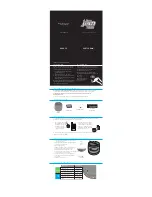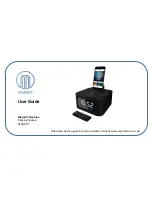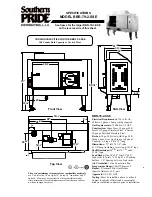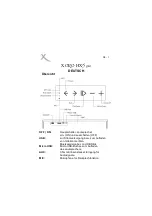
9
PLACEMENT AND MOUNTING
Place the speakers ahead of the microphones.
Feedback (howling) occurs when the microphones
pick up the sound that comes out of the speakers
and feed it back to the system. Feedback can
cause damage to the speaker system. If space is
limited, direct the speakers towards areas where
there are no microphones to minimize feedback.
When using a turntable, place the speakers far
from the turntables. If the speaker signal is picked
up by the stylus and reamplified, low frequency
howling will occur. The use of a very heavy base
for the turntable is recommended.
Bass output for bass cabinets in general will
increase when placed against floors and/or walls.
In this case, you may need to attenuate the gain of
the low frequency section or use attenuation on
the low frequency equalization.
The more portable models feature a tripod
socket for use with standard 35-mm tripods such
as the D.A.S.
. Be careful not to raise the
units too high on the tripod, as they may become
unstable. Do not use a tripod on sloped surfaces.
The top panel of model
features a
tripod socket for use with standard 35 mm
poles. This allows pole mounting for systems
that have tripod capability. The
is a 35
mm pole that raises the top box 51 cm (21").
Do not use mounted systems on irregular
floors or with slopes.
TRD-2
sub-18H
TRD-4
Placement
Tripod use
Use on
with
sub-18H
TRD-4
Rotating the horns
Weather resistance
cabinets are manufactured from
phenolic plywood finished with a special water
based black paint that protects the wood from
water and humidity. Additionally,
units have an acoustically transparent cloth that
will further protect the components from the rain.
Speaker cones are protected against humidity
at the factory with a fine coat of varnish. If the
speakers will be exposed to the elements, you
may additionally treat the paper cones with a
water repelling spray or by applying a coat of
varnish. Always bear in mind that any coating
should be very light so as not to change the
weight of the cone significantly.
In fixed installations, do not expose the
components
to
direct
rain.
For
open-air
applications, place the speakers under some form
of canopy or cover.
reference series
reference series
Models
,
,
,
have rotatable horns. This allows maintaining
the original horn characteristics (wider horizontal
coverage than vertical) when mounted in
horizontal position. This feature is particularly
useful in low ceiling rooms.
To rotate the horns you will need to remove
the front grille first, then the horn. Then
carefully rotate the horn 90 degrees, being
careful not to disconnect the wires. Then screw
the horn back into place and replace the grille.
Rf-12.85 Rf-15.85 Rf-12.64 Rf-15.64
EN
Manual del Usuario
/ r
/
User’s Manual
eference
Summary of Contents for RF-12.64
Page 2: ...Rf ...
Page 6: ...Manual del Usuario r User s Manual eference ...
Page 8: ...EN Manual del Usuario r User s Manual eference ...
Page 27: ......














































